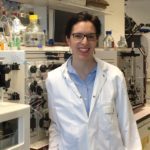Link to Pubmed [PMID] – 31439150
Link to DOI – S0065-3527(19)30017-X10.1016/bs.aivir.2019.05.007
Adv Virus Res 2019 ; 104(): 225-281
Membrane fusion is a fundamental biological process that allows different cellular compartments delimited by a lipid membrane to release or exchange their respective contents. Similarly, enveloped viruses such as alphaherpesviruses exploit membrane fusion to enter and infect their host cells. For infectious entry the prototypic human Herpes simplex viruses 1 and 2 (HSV-1 and -2, collectively termed HSVs) and the porcine Pseudorabies virus (PrV) utilize four different essential envelope glycoproteins (g): the bona fide fusion protein gB and the regulatory heterodimeric gH/gL complex that constitute the “core fusion machinery” conserved in all members of the Herpesviridae; and the subfamily specific receptor binding protein gD. These four components mediate attachment and fusion of the virion envelope with the host cell plasma membrane through a tightly regulated sequential activation process. Although PrV and the HSVs are closely related and employ the same set of glycoproteins for entry, they show remarkable differences in the requirements for fusion. Whereas the HSVs strictly require all four components for membrane fusion, PrV can mediate cell-cell fusion without gD. Moreover, in contrast to the HSVs, PrV provides a unique opportunity for reversion analyses of gL-negative mutants by serial cell culture passaging, due to a limited cell-cell spread capacity of gL-negative PrV not observed in the HSVs. This allows a more direct analysis of the function of gH/gL during membrane fusion. Unraveling the molecular mechanism of herpesvirus fusion has been a goal of fundamental research for years, and yet important mechanistic details remain to be uncovered. Nevertheless, the elucidation of the crystal structures of all key players involved in PrV and HSV membrane fusion, coupled with a wealth of functional data, has shed some light on this complex puzzle. In this review, we summarize and discuss the contemporary knowledge on the molecular mechanism of entry and membrane fusion utilized by the alphaherpesvirus PrV, and highlight similarities but also remarkable differences in the requirements for fusion between PrV and the HSVs.

